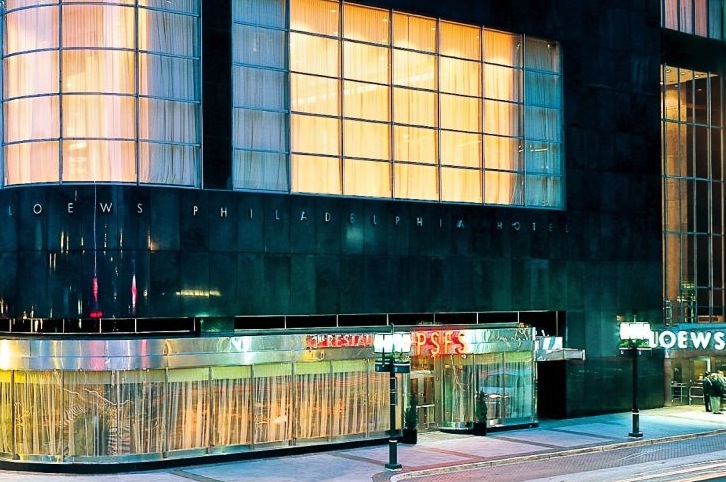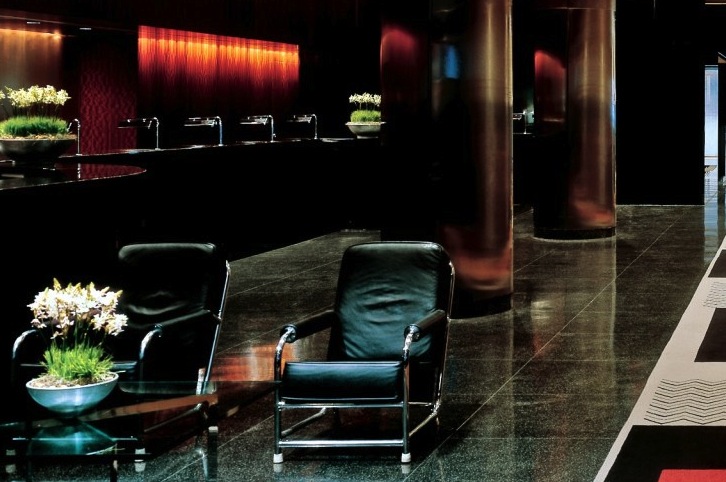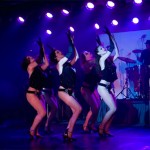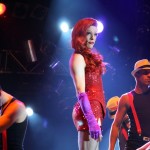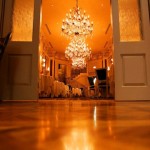If at first you’re looking out onto the roof of a neighboring building, and your view is of a generator, then try again. Keep changing rooms until you get a view of William Penn. That’s the whole point of Philadelphia.
For years (until 1987), the statue of Penn was the highest point in the city—and the unwritten law was that no building was to be higher than Penn’s hat. So you want to see him—and the rest of the city’s lights at night. For unlike what W.C. Field’s infamously said about Philly being nothing more than a cemetery with street lights, there’s a view to be had in Philly, what with its new skyline, marked by two Helmet Jahn towers (One and Two Liberty Place).
Once you’re settled into a room where you belong, you’ll notice a kind of Thirties Art Deco quality about the furnishings: for example, a chaise longue in burgundy velvet and cherry cabinets edged with ebony, along with tables fitted out in chrome and glass. It’s a bit generic, and maybe a forerunner to what has become known as W Hotel style, but there’s nothing wrong with it either, as far as comfort. It’s a non-demanding room, asking little more of you than to sink into a chair and enjoy the view.
As for the bathrooms, they’re furnished with Loews Bloom toiletries and are perfectly acceptable.
Public Spaces
Housed in what is generally considered to be the nation’s first modernist skyscraper (built in 1932 and once the headquarters of the Philadelphia Savings Fund Society), the Loews Philadelphia Hotel is now a National Historic Landmark with the signature PSFS sign still shining red above the city. Retaining the marble floors and the bank vaults, the lobby of the Loews has a kind of grandness often associated with savings banks of yesteryear.
Mind you, there are two entrances, and neither of them particularly gracious—the entrance on Market Street doubles as an entrance to an office building/convention center bringing you smack in front of an escalator, and the entrance on 12th Street showcases a connecting side corridor—but once you’re at reception, the building’s appeal is more readily apparent.
One entire corner of the main floor is given over to an oversized (and often too empty) restaurant called Solefood where the emphasis is on fish and the design, in the hotel’s own word, is “eclectic.”
Breakfast
The vast dining room on the first floor is a bit too impersonal for breakfast—though the menu is fine. The room doubles as a television studio for Philadelphia’s morning show—and one morning there was a segment on tutus for dogs. We ate our eggs while dogs paraded on a catwalk—which somehow seemed appropriate for the odd charms of Philadelphia.
Staff
Extremely pleasant (if not model gorgeous) with absolutely none of the attitude one might associate with a city such as New York, Miami, or Los Angeles. This is, after all, the “City of Brotherly Love,” and the staff appears to take the sobriquet to heart.
Location
Again, it’s a matter of direction. Walk out the main entrance and head east along Market Street toward the river and you’re walking through a neighborhood frequented more by the homeless. Avoid this stretch of Market and head west toward the statue of William Penn, and Rittenhouse Square just to the south. Overall, the location is convenient to the Kimmel, the gayborhood, and even Old City.
Overview
The Loews Philadelphia has beautiful bones—if not the most fashionable dress (and address). For a business traveler, the Loews Philadelphia works perfectly well.
LINK: Loews Philadelphia Hotel

